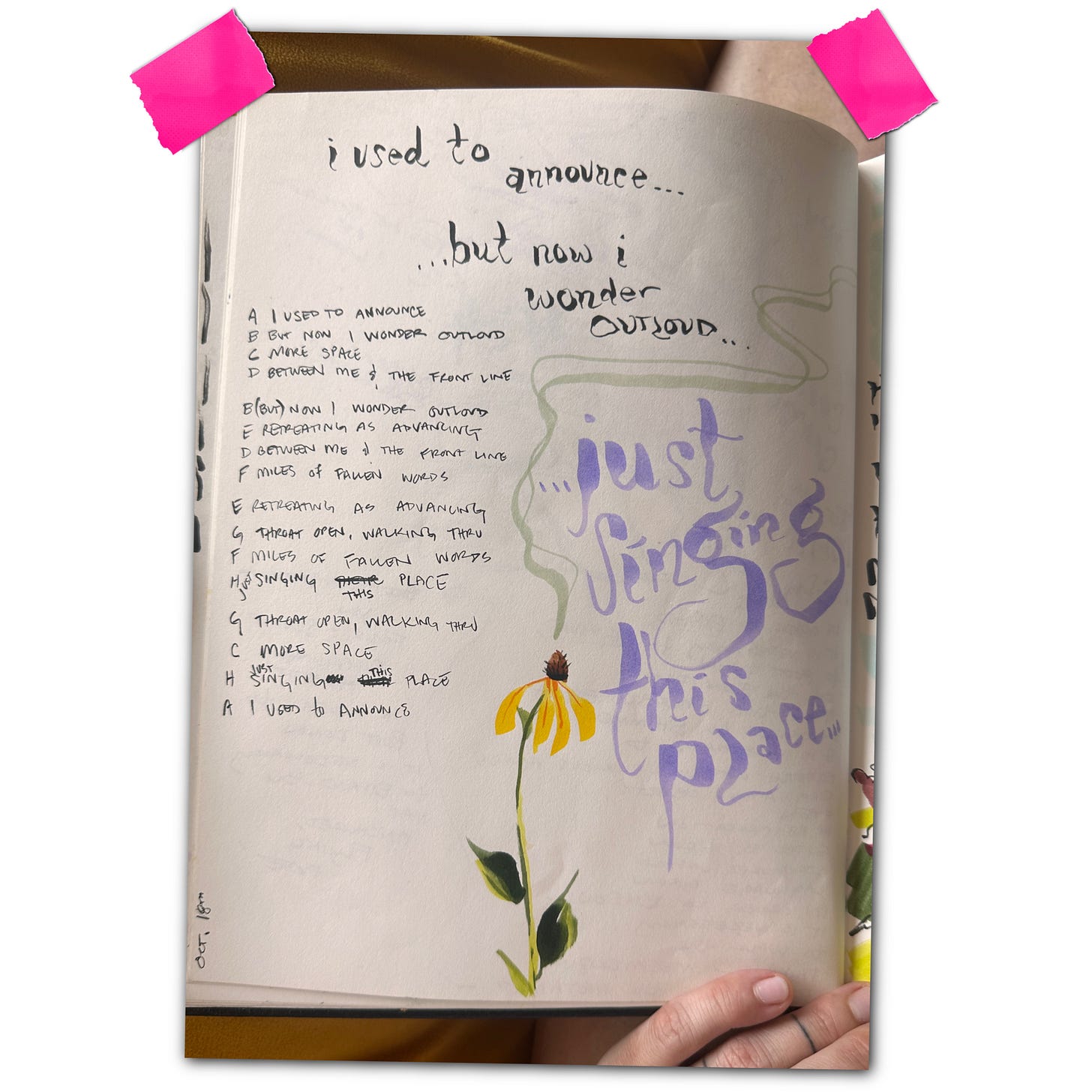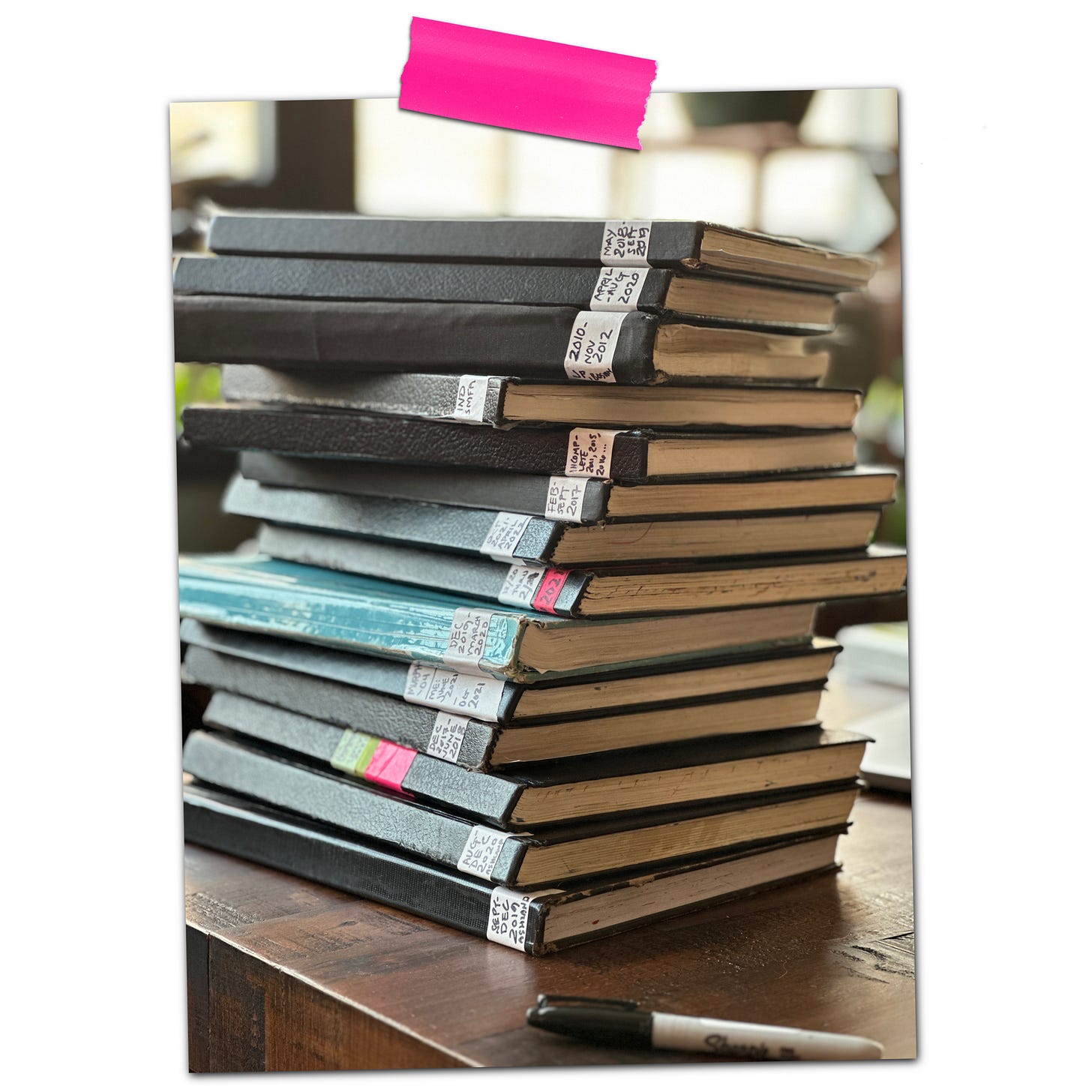When I was 21 I moved to a little hand-hewn log cabin nestled in the center of a few hundred acres of cedar, oak and hazelnut shrub in North Carolina. Leaving the clearing surrounding the house, we made a daily adventure of walking the woods, visiting little points of interest along the way. First to the freshwater spring gurgling up in the gully out back, over the ridge to the bones of the old moonshine still rusting in leaf litter, kicking jars and bits of tin. Northbound to the irrigation ditch covered in blackberries and following the power line trail to the east, looking for the tattered orange ribbon that marked the eastern boarder of the property. Dropping down, weaving amongst young pines, we would make our way to the bonfire clearing, the ring of tall grass hopping with chiggers and rabbits. Back through the oaks, past the snake graveyard, arriving back at our ancient and untamable rose bush that welcomed us: home.
A place given form by a practice. A practice given form by neat boundaries.
No fences.
It occurs to me that by now I’ve been crafting creative prompts for students (for friends, for anyone who wants to play) for almost 25 years. If you’ve studied with me you’ve definitely played creative games and if you’ve partied with me I’ve probably also roped you into some form of parlor game at one point or another. Come over for a dinner party and stay for a few rounds of words-from-a-hat storytelling!
Creative gamification is really just about planting some neat boundaries at your perimeter that let you amble through the woods joyfully before stumbling back home. They take the pressure off the journey and let you wander in wonder.
With dedicated adventuring, some boundaries have the capacity to expand to such great horizons that you could wander that map every day and discover something totally new within its borders. The map that has given my creative wandering consistent form for decades is the pantoum.
Does a poetic form constitute a creative game or a prompt? I definitely think so. Give me a blank page and tell me to “write something cool” and I may stare at it feeling useless, accidentally cruise back to social media for an uncomfortable numb-out, get up and make another cup of coffee, freeze under the weight of possibility. But give me a blank page and a loose topic & tell me my first line and last line will be the same and every other line will be a repeat of a line I’ve already written— okay! All I have to do is write the first line and get interested in how it unfolds. Half the piece gets written behind my own back.
I learned this poetic form as a teenager working with two incredible directors trained in improvisation. I was part of a young women’s theatre troupe writing and touring material based on our own experiences of growing up female. For a couple weeks each summer we would get together in a church basement and play creative games, improv games, writing games to generate our new material for the upcoming season. I think the first time we used pantoum was to work our way into a songwriting session on the topic of abusive relationships. The recursive form of the poem echoed the cycles of violence theme we were working with and somehow helped us transcend the heaviness by anchoring us in lyrical structure. I’ve been working with this captivating form ever since. (Thank you forever Cil & Carolyn)
Each time I teach this form there is always someone in the group who latches onto it just like I did. If you’re tantalized by losing just a little bit of control in your creative process, if you’re motivated by discovery and happy accidents, if you like to find new ways to rub up against The Mystery, you might also fall in love with this poetic practice.
Mapping the structure is part of the ritual. You can pick any length for the pantoum, but I’ve gotten most comfy over the years in this simple line structure: ABCD, BEDF, EGFH, GCHA. Though I can rattle off the line order now, I always start by writing it down. I’ll plant the structure in the beginning of my notebook and I’ll rehearse the structure with every page. When I crack open my notebook in the morning to greet myself for the day, when I have a complex sentiment to untangle, when it’s a particularly special day, anniversary or quality of time- I touch the pen down and start with ABCD, BEDF, EGFH, GCHA down the side of the page. Line A is usually impulsive, intuitive, the words knocking around loudest in my head when I begin. Then I just start wandering between boundaries, knowing I’ll eventually make my way back home.
A i used to announce
B but now i wonder out loud
C more space
D between me & the front line
B now i wonder out loud
E retreating as advancing
D between me & the front line
F miles of fallen words
E retreating as advancing
G throat open, walking through
F miles of fallen words
H just singing this place
G throat open, walking through
C more space
H just singing this place
A i used to announce
“i used to announce…/…just singing this place” October 2022 (image above)
A prompt for you…
Remember, the goal here is neither progress nor perfection— just practicing discovery. (Comments are on to share what you find!)
Set up your page with ABCD, BEDF and so on… (structural reference for pantoum poetry.)
Now, consider this topic: In Praise of Good Boundaries… and start writing with whatever first comes to mind in Line A.
Have fun bouncing off these boundary markers while you weave your way homeward!








Mandala being
A) radial balance
B) within reach if hands and feet
C) yielding and flowing
D) hearts nature tracking infinity
B) within reach if hands and feet
E) trust you know when to dance and when to re-treat
D) hearts nature tracking infinity
F) soles to the ground, crown to the sky
E) trust you know when to dance and when to retreat
G) what are you willing to experience?
F) soles to the ground, crown to sky
H) if it doesn't feel right, inverse and ask why
G) what are you willing to experience
C) yielding and flowing
H) micro, macro ~ vibration you amplify
A) radial balance
<3333
Love it! Thanks for teaching me a new (to me) word and form. I'm in a short story cycle on Medium, but will write a pantoum and post it here before posting there in a few weeks when the cycle is complete. By the way, in the past few years I've set some challenges (or prompts) for myself with unfamiliar forms of writing. One of my favorites was the ghazal: www.poetryfoundation.org/learn/glossary-terms/ghazal.